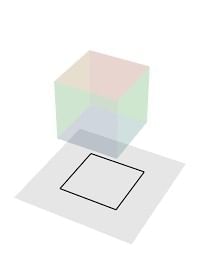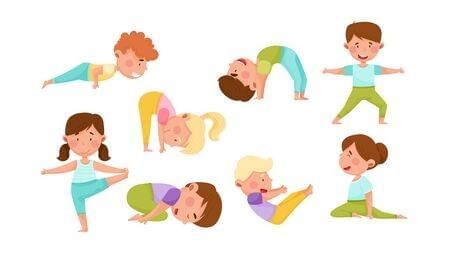Class 8 Exam > Class 8 Notes > Arts (Kriti) Class 8 - New NCERT > Chapter Notes: People in Places
People in Places Chapter Notes | Arts (Kriti) Class 8 - New NCERT PDF Download
| Table of contents |

|
| Introduction |

|
| Perspective |

|
| Human Anatomy |

|
| Body Positions and Postures |

|
| Composition in Perspective |

|
Introduction
Art has the power to appear both flat and full of depth. Through the technique of perspective, artists can make a simple surface look three-dimensional, giving a sense of distance and realism. By combining perspective with correct human proportions, drawings of people, buildings, and everyday scenes appear more natural and lifelike.
Perspective

- Perspective is a technique to show three-dimensional space on a flat surface.
- It creates an illusion where closer objects look bigger and have more details, and distant objects look smaller.
- Lines on either side of a road or railway tracks look as if they converge in the distance, though they are actually parallel.
- The horizon line matches the viewer’s eye level.
- Lines converge at a vanishing point, which is also at eye level.
- To visualise perspective:
- Think of your eyeball as a circle with the centre as the vanishing point.
- The horizontal line across the centre of the eye is the horizon line.
- Other lines radiate from the centre in different directions.
- Three important things to draw in perspective:
- Identify the horizon line at eye level in the scene.
- Visualise the vanishing point.
- Observe the angle of lines that converge at the vanishing point.
- Perspective helps in drawing buildings and monuments realistically.
Example: In the Rani ki Vav Stepwell image, the lines of upper and lower storeys appear to converge at the vanishing point. - In building interiors, lines of walls, ceilings, and floors also meet at the vanishing point.
- Once you understand perspective principles, you can draw simple objects from various angles.
Human Anatomy
- Anatomy refers to the structure of the human body.
- Body structure changes with age; some parts grow more than others.
- Proportions of body parts are expressed in ratios (e.g., head size compared to the rest of the body).
- Example ratios:
- Parts equal to the head size: 1 : 1
- Parts twice the head size: 1 : 2
- Parts thrice the head size: 1 : 3
- The system of measuring body proportions has been important in Indian painting and sculpture.
- Texts from the Shilpa Shastra describe ratios for divine beings, royalty, warriors, children, animals, and mythological beings.
- This system is called the Tālamāna Paddhati:
- One tāla equals the length of an adult hand from the bottom of the wrist to the tip of the middle finger.
Body Positions and Postures

- After drawing standing figures, observe proportions in other postures such as sitting, bending, lying, and squatting.
- Ask friends or family to pose in different positions for observation and drawing.
- Share drawings with them and explain what you learned about body proportions.
Composition in Perspective
- Plan the layout by making preparatory sketches.
- Include foreground, middleground, and background elements.
- Mark the horizon line and vanishing point.
- Draw human figures at different distances.
- Ensure figures are proportionate to the setting.
- Add other elements such as furniture, objects, trees, roads, vehicles, and buildings.
- Choose one layout and make a final artwork.
- Colouring:
- Use any medium such as colour pencils, pastels, crayons, watercolours, poster colours, acrylic colours, or natural colours.
- Choose colours based on season, time of day, or mood.
- Experiment with combinations in preparatory sketches.
- Title your artwork based on your ideas, inspirations, and memories.
The document People in Places Chapter Notes | Arts (Kriti) Class 8 - New NCERT is a part of the Class 8 Course Arts (Kriti) Class 8 - New NCERT.
All you need of Class 8 at this link: Class 8
|
76 docs|19 tests
|
FAQs on People in Places Chapter Notes - Arts (Kriti) Class 8 - New NCERT
| 1. What is the importance of understanding human anatomy in the study of perspective in art? |  |
Ans. Understanding human anatomy is crucial in the study of perspective in art because it allows artists to accurately depict the human form in various positions and postures. A solid grasp of anatomy helps in creating realistic proportions, movements, and expressions, which enhances the overall composition and visual storytelling in artwork.
| 2. How can body positions and postures affect the perception of a scene in art? |  |
Ans. Body positions and postures significantly influence the perception of a scene in art by conveying emotions, actions, and interactions among figures. Different poses can suggest various feelings, such as tension, relaxation, or dynamism, thus guiding the viewer's interpretation of the narrative being presented in the artwork.
| 3. What techniques can be used to achieve accurate perspective in drawing people in places? |  |
Ans. Techniques to achieve accurate perspective when drawing people in places include using a vanishing point, establishing a horizon line, and applying the principles of foreshortening. By understanding these techniques, artists can create an illusion of depth and space, making the figures appear proportionate and integrated into their surroundings.
| 4. Can you explain the concept of composition in perspective and its relevance to depicting humans in environments? |  |
Ans. Composition in perspective involves arranging elements within a space to create a coherent and visually appealing scene. It is relevant to depicting humans in environments as it determines how figures relate to each other and their surroundings. A well-composed scene can enhance the storytelling aspect and draw the viewer’s eye to focal points within the artwork.
| 5. What are some common mistakes artists make when illustrating human figures in perspective? |  |
Ans. Common mistakes artists make when illustrating human figures in perspective include incorrect proportions, lack of understanding of foreshortening, and failing to establish a consistent light source. These errors can lead to unrealistic representations and distort the viewer's perception of space and form, detracting from the overall quality of the artwork.
Related Searches



















